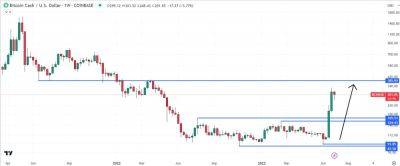How Many Bitcoins are There in 2023?
Disclaimer: The Industry Talk section features insights by crypto industry players and is not a part of the editorial content of Cryptonews.com.
The supply of Bitcoin is fixed, with new BTC tokens entering the market every 10 minutes. But how many Bitcoins are there in 2023?
Currently, 19.4 million, or 92% of the total Bitcoin supply is in circulation, as per CoinMarketCap data.
In this guide, we take a much closer look at the Bitcoin supply, including a full analysis of how it can impact its long-term value.
To understand the circulating supply of Bitcoin, it is important to go right back to the beginning. Put simply, when Bitcoin was launched in 2009, it was created with a fixed supply mechanism. On average, new BTC tokens enter circulation every 10 minutes.
As we explain in more detail later, the exact block time can vary depending on network conditions. But over the course of time, this has averaged 10-minute cycles. So why does this matter? Well, every time a new block of transactions is confirmed, the circulating supply increases.
Currently, this amounts to 6.25 of newly minted Bitcoin tokens. Previously, however, this stood at 12.5 BTC. And before that, 25 BTC and 50 BTC, respectively. The reason the supply rate changes is due to 'Bitcoin halving'.
Bitcoin halving happens every 210,000 blocks, or about four years. This reduces the supply of new tokens over time. More specifically, the number of new BTC tokens entering the supply every 10 minutes is reduced by 50%.
The next Bitcoin halving will take place on block number 840,000 - expected in April 2024. Bitcoin halving provides the BTC ecosystem with clarity, certainty, and predictability. After all, Bitcoin cannot suddenly increase its supply.
The Bitcoin supply
Read more on cryptonews.com






















